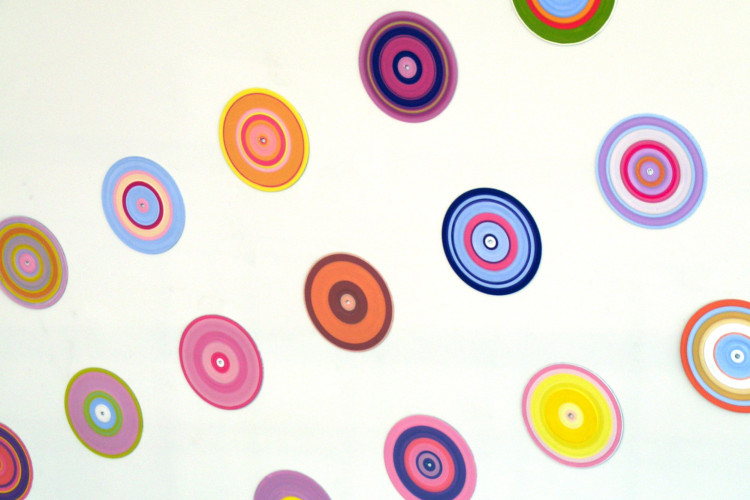The Op Shop
10 June 2006 - 10 September 2006
In The Op Shop, six New Zealand artists inject second-hand things with fresh stories and visual dazzle, and in the process bring some heat and light to the Gallery’s foyer spaces in mid-winter.
The artists seen here are not part of a strict group or style, but they all use forms and techniques more often associated with opportunity shops than art galleries. Wander the foyer and you’ll find old records, disused clothes, cheap ornaments, cliché sunsets, and an obsessively large piece of knitting. But these artists aren’t out to emphasize the lowliness of their sources. Instead they connect their op-shop finds to other forms of ‘op’ – opulence, optical art, and Pop.
One of New Zealand’s most famous reclaimer of ‘lowly’ objects and materials, Judy Darragh colonises the Big Wall with hundreds of squiggles fashioned from perishable materials and sprayed with toxically bright colour. Nearby is Rachel Easting’s Love, and Desire, which transforms a cheap ceramic ornament into a vast polychrome monument – girl’s bedroom meets high Baroque. Easting shares a love of highly crafted surfaces and high-impact objects with her one-time teacher Scott Eady, whose Boat Buoy combines a model boy and some customized knitting to create a riddling game of dress-up.
The Op in op-shop is also for Optical. Michael Morley has used an old turntable as a paint machine by replacing its stylus with a small brush and turning hundreds of old 45 rpm records into discs of abstract colour that pulse in the eye. Follow Morley’s colony of albums up to the second-floor lookout deck to see Sara Hughes’s Love Me Tender, which takes the Paisley clothing patterns imported to New Zealand by nineteenth-century Scottish settlers and sends them into an optically disorienting, computer-generated, twenty-first century space.
Reuben Paterson also finds patterns of identity in the clothes of an earlier era and uses his trademark coats of glitter to make them shimmer with life. The clothes of loved female relations have inspired some of his best-known works. In his two recent works in the Gallery’s first-floor window, Paterson bestows his richest glitter surfaces on a vast island nightscape and a pile of old shoes that contains those of his late father. Adding coat after coat of coloured light to these objects, Paterson transforms op-shop stuff – cliché scenes, abandoned and seemingly anonymous shoes – into a shimmering celebration of family memory and future potential.
_________
View the works labels – click here






